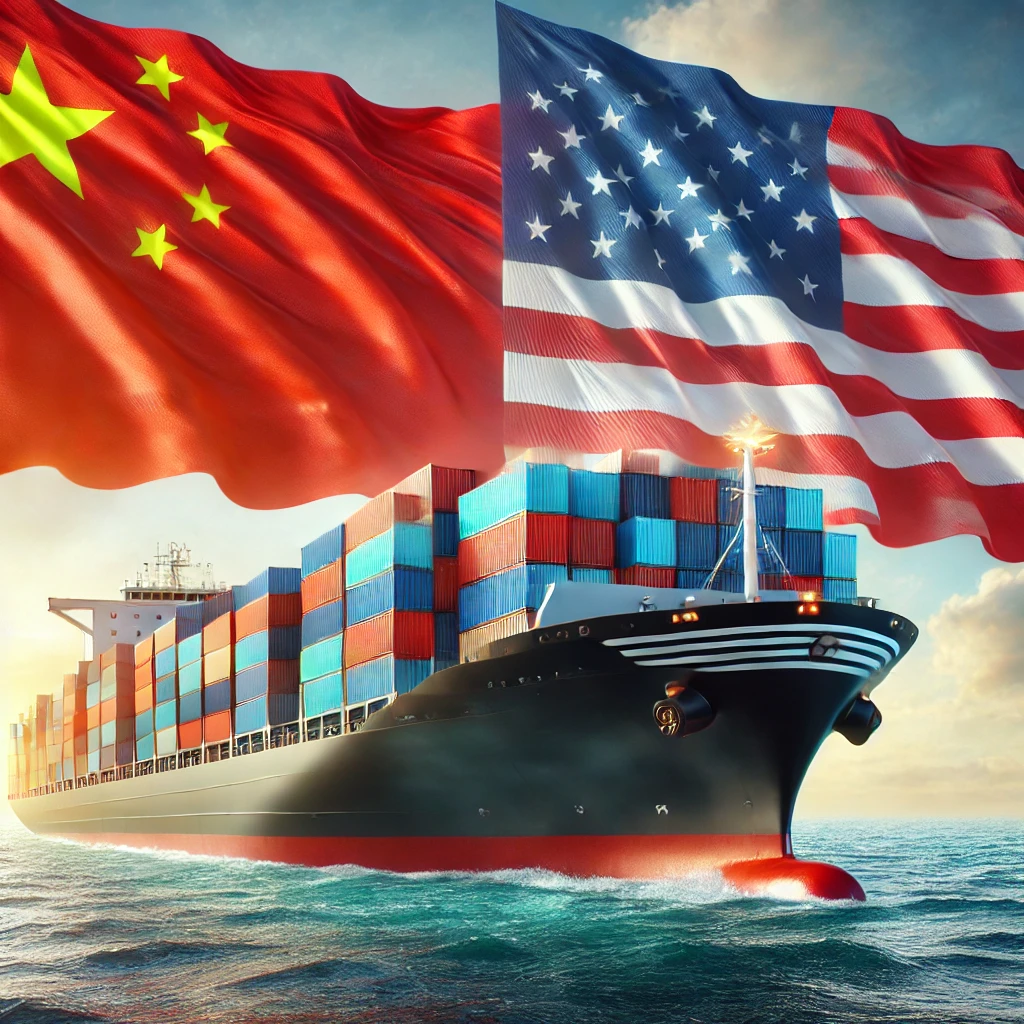- By TOP CHINA FREIGHT
- September 15, 2025
- Shipping
Table of Contents
Understanding freight charges from China to USA is essential for businesses importing goods from China. Many importers struggle with fluctuating shipping costs, customs delays, and unpredictable transit times. Proper planning, strategic port selection, and working with experienced freight forwarders can help optimize costs and improve delivery efficiency. This guide explores pricing, transit schedules, documentation, and best practices to navigate sea and air freight challenges effectively.

What factors affect freight charges from China to USA?
Several elements influence shipping costs:
Container type:
Full Container Load (FCL) vs Less than Container Load (LCL).
Origin and destination ports:
Congested ports or remote locations can increase fees.
Cargo characteristics:
Weight, volume, and type of goods matter.
Shipping season:
Peak periods may cause surcharges.
Carrier and fuel costs:
Fuel price fluctuations directly impact total charges.
Table: Key Factors Influencing Freight Charges
| Factor | Impact on Charges |
|---|---|
| Container Type | FCL usually cheaper per unit than LCL |
| Port Selection | Congested ports increase handling fees |
| Cargo Weight/Volume | Larger or heavier goods cost more |
| Shipping Season | Peak season surcharges may apply |
| Fuel and Carrier Rates | Volatile fuel costs affect overall charges |
How much do freight charges from China to USA cost?

Costs vary based on container type, shipment size, and ports:
| Container Type | Estimated Cost (USD) | Transit Time | Notes |
|---|---|---|---|
| 20ft FCL | $2,000–$2,800 | 18–25 days | Best for standard bulk shipments |
| 40ft FCL | $3,200–$4,500 | 20–30 days | Ideal for large-volume shipments |
| LCL per CBM | $45–$75 | 25–35 days | Suitable for smaller cargo volumes |
Choosing a reliable freight forwarder can help negotiate better rates and optimize transit schedules.
What is the difference between FCL and LCL shipments?

FCL (Full Container Load):
- Best for large shipments.
- Offers more security and lower cost per unit.
- Faster transit due to no consolidation delays.
LCL (Less than Container Load):
- Suitable for small-volume shipments.
- Costs calculated per cubic meter.
- Slightly longer transit time due to consolidation processes.
Table: FCL vs LCL Comparison
| Feature | FCL | LCL |
|---|---|---|
| Cost | Lower per unit | Higher per unit |
| Transit Time | Faster | Slightly longer |
| Security | High | Moderate |
| Volume Requirement | Full container | Partial shipment |
How do ports and shipping routes affect costs?
Port selection impacts both freight charges and transit time:
- Major U.S. ports like Los Angeles, New York, and Savannah have advanced infrastructure and lower handling costs.
- Smaller or remote ports may involve higher fees due to limited capacity.
- Direct shipping lines reduce transit time and risk of delays, whereas transshipment can increase costs and handling risks.
What documentation is required for China-USA shipments?

Proper documentation ensures smooth customs clearance:
| Document | Purpose |
|---|---|
| Bill of Lading (B/L) | Proof of shipment |
| Commercial Invoice | Declares product value |
| Packing List | Lists cargo dimensions and weight |
| Certificate of Origin | Required for preferential tariffs |
| Import License | For restricted goods |
| Customs Declaration | Provides shipment details to authorities |
Experienced forwarders often manage documentation for seamless clearance.
How can importers reduce freight charges from China to USA?
Combine multiple LCL shipments into FCL containers.
Choose less congested ports and direct shipping lines.
Ship outside peak seasons to avoid surcharges.
Freight brokers can secure discounted carrier fees.
Minimize volumetric weight and maximize container space.
How long does shipping from China to USA take?
Transit times depend on ports and shipping routes:
| Destination Port | Transit Time | Notes |
|---|---|---|
| Los Angeles | 18–25 days | Major West Coast port |
| New York | 20–28 days | East Coast import hub |
| Savannah | 22–30 days | Southeastern U.S. port |
| Inland destinations | 25–35 days | Requires trucking from port |
Forwarders can optimize schedules to reduce delays and ensure timely delivery.
Case Study: Electronics Importer Reduces Freight Costs

An electronics importer shipping multiple small LCL shipments to Los Angeles faced high costs and delays. By consolidating shipments into FCL containers, choosing off-peak schedules, and using direct shipping lines, the company reduced costs by 28% and improved transit times by five days.
How to choose the right freight forwarder for China-USA shipments?
A professional forwarder provides:
- Experience with China-USA routes
- Transparent, itemized pricing
- Customs clearance expertise
- Access to multiple shipping lines
- Real-time shipment tracking
Partnering with a forwarder ensures cost-effective, reliable, and hassle-free shipping operations.
Conclusion
Understanding freight charges from China to USA requires careful evaluation of container types, ports, shipping routes, transit times, and documentation. Working with a skilled freight forwarder helps reduce costs, minimize delays, and ensure smooth supply chain operations.
Need a Shipping Quote?
If you want expert guidance and peace of mind, our team is ready to assist.
TJ China Freight offers tailored solutions to help businesses of all sizes ship more reliably from China.

FAQ
Q1:Is FCL more cost-effective than LCL for large shipments?
Yes, FCL offers lower per-unit costs, faster transit, and greater security, especially for high-volume shipments compared to LCL consolidation.
Q2:How long does sea shipping from China to USA take?
Transit times range from 18–35 days, depending on ports and routes. Consolidation or inland delivery may slightly extend shipping time.
Q3:Can shipping off-peak reduce freight charges?
Yes, shipping outside peak seasons avoids surcharges and reduces congestion. Advanced planning with a freight broker optimizes scheduling.
Q4:Do freight charges include customs duties?
No, freight charges cover transportation. Customs duties, taxes, and port fees are additional and often handled by a forwarder.
Q5:Can a freight forwarder consolidate LCL shipments?
Yes, forwarders consolidate multiple LCL shipments into FCL containers, saving costs and reducing transit delays.
